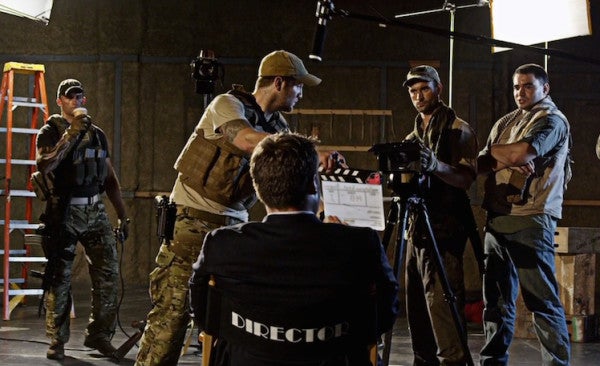The Powerful Effect of Veterans’ Stories
Veterans ranging from James Jones to Oliver Stone have brought their war experiences to the mainstream media and been celebrated...

Veterans ranging from James Jones to Oliver Stone have brought their war experiences to the mainstream media and been celebrated as artists. Today, veteran artists have proven themselves successful too, most recently with authors Kevin Powers and Phil Klay, but civilian audiences can fall into an assumption that a veteran’s art is therapeutic first, creative second. Those two often go hand-in-hand, given the empathetic nature of art, so where does one end and the other begin?
Operation Encore Co-Founder Erik Brine says he founded his organization for musicians who happen to be veterans. The organization, which was co-founded with fellow Air Force veterans Rob Raymond and Chris Kurek, is a collaboration of singer-songwriters from across the military and veterans community. The goal is to not only present more rounded portrayals of military life to a wider audience, but also to give veterans a second career as musicians. In fall 2014, sometime near Veterans Day, the organization plans to release a compilation album, which they recorded in Arizona after a successful Kickstarter campaign that raised nearly $18,000.
Some of the songs are direct tales of combat, Brine says, while others are more subtle, such as a soldier’s faltering relationship with a woman. And that is part of Operation Encore’s strategy. Although Brine says the organization recognizes that it is helpful to share personal stories among the veterans community, he primarily wants their artists to reach a more mainstream audience and chip away at the stereotypes.
“The military is a microcosm of society,” Brine says, adding that there are a variety of jobs and experiences in the military, just as there are in the civilian world.
That is something non-profit organization Veteran Artist Program has been trying to illustrate over the last several years as well — a whole spectrum of the veteran experience. Veteran Artist Program founder B.R. McDonald says the challenge is two-fold: The military tends to set parameters, and some find it hard to break out of those labels; and there is a big divide between people who have served overseas in combat roles and those who haven’t. With that in mind, the program shies away from the notion of arts as therapy, although McDonald says he recognizes and appreciates the therapeutic value of art.
“I just don’t believe veterans should be pigeonholed into accessing the arts only through this notion of therapy,” says McDonald, who had a background in the performing arts before joining the Army. When he separated, he sought a way to connect the two worlds. In 2009, he started the Veteran Artist Program, which focuses on visual arts, performing arts, writing, film and video, as well as interactive media.
“At the time, there was nothing happening in the veteran artist community,” he says. “The idea of a veteran artist wasn’t even in the mainstream rhetoric.”
The program takes artists who are also veterans and tries to showcase their works and develop their careers in the mainstream arts community through networking, mentorships, collaborations with professional artists and original productions. The group has produced music and theatrical live events, filmed three documentaries and one feature film, as well as curated gallery exhibits, provided video and photography services and helped organized community improvement projects.
Although a lot of the art created by veterans has mostly focused on current conflicts, McDonald says it’s starting to shift away from that, as veteran artists grow creatively. The future of the organization is to bring the fractured veteran artist space together. Focusing on collaboration and mentorship is what makes us successful, McDonald says, adding that there’s a real desire for the rest of America to be involved in this discussion.
To help foster that, the Veteran Artist Program produces the Arts & Service Celebration, a conference-style event that not only provides networking for veteran artists, but also creative workshops. In October, it will produce an event in Austin, Texas, in partnership with the Austin Community College, Writers’ League of Texas, the University of Texas at Austin Texas Performing Arts and the Telling Project.
On discussing his mission, McDonald notes, “I want to make sure that when we talk about the arts and veterans, we talk about it as a continuum.”
Ramiro G. Hinojosa, a political research analyst in Austin, Texas, served in Iraq from 2006-07 with the 82nd Airborne Division. He is a member of the Truman National Security Project’s Defense Council. His nonfiction writing has appeared online at Tin House’s The Open Bar, Guernica Daily, and Stars & Stripes.